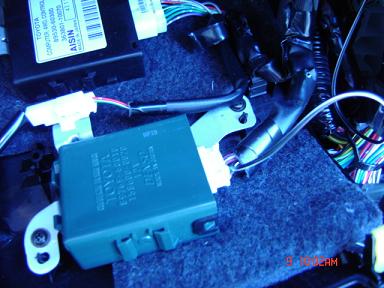To disable the tire pressure light, check tire pressure and reset the TPMS system. Refer to your vehicle’s manual for specific instructions.
The tire pressure monitoring system (TPMS) light can be an annoying distraction. It often turns on due to fluctuating temperatures or minor changes in tire pressure. Ensuring that your tires are inflated to the recommended pressure is the first step.
Use a reliable tire gauge to measure the pressure in each tire. After adjusting the tire pressure, reset the TPMS system. This process varies by vehicle, so it’s crucial to consult your car’s manual. Regular maintenance of your tires and TPMS can prevent future issues and ensure safer driving conditions. By following these steps, you can keep the tire pressure light off and maintain optimal tire performance.

Introduction To Tire Pressure Monitoring Systems
The Tire Pressure Monitoring System (TPMS) is a safety feature in modern cars. It alerts you when your tires are under-inflated. Proper tire pressure is vital for safe driving. This guide will help you understand TPMS and how to disable the tire pressure light.
Purpose Of The Tpms
TPMS serves a crucial role in vehicle safety. It ensures your tires are at the right pressure. This reduces the risk of tire failure. Proper tire pressure improves fuel efficiency. It also extends the life of your tires. The system alerts you with a light on the dashboard. This light warns you if the pressure is too low.
Consequences Of Ignoring The Tire Pressure Light
Ignoring the tire pressure light can lead to serious issues. Low tire pressure affects your car’s handling. It can cause uneven tire wear. This increases the risk of a tire blowout. Driving with low pressure can also reduce fuel efficiency. This means you spend more on gas. Always pay attention to the TPMS light for your safety.

Common Causes For Tire Pressure Light Activation
The tire pressure light can be annoying. Understanding the common causes helps. These are the main reasons why the tire pressure light activates.
Seasonal Temperature Changes
Temperature changes affect tire pressure. Cold weather causes air to contract. Hot weather makes air expand. This can trigger the tire pressure light. Checking tire pressure regularly is a good habit.
Punctures And Leaks
Punctures and leaks are common causes for tire pressure light activation. Nails, glass, and other sharp objects cause punctures. Slow leaks happen over time. Regularly inspect your tires for damage. Use a tire repair kit if needed.
Sensor Malfunction
Sensors sometimes fail. A damaged sensor can activate the tire pressure light. Sensors get dirty or wear out. Replacing faulty sensors is important. Consult a mechanic if you suspect a sensor issue.
| Common Cause | Description |
|---|---|
| Seasonal Temperature Changes | Temperature changes cause air to contract or expand. |
| Punctures and Leaks | Sharp objects or wear cause air to leak from tires. |
| Sensor Malfunction | Faulty or dirty sensors can trigger the light. |
Initial Checks Before Disabling The Light
Before disabling the tire pressure light, complete some initial checks. These checks help ensure there are no underlying issues. This process can save time and keep you safe on the road.
Inspecting Tires For Visible Issues
First, check each tire for visible problems. Look for nails, cuts, or bulges. These issues can cause the tire pressure light to come on. Inspect the tire tread for uneven wear. This can indicate a bigger problem.
- Look for nails, cuts, or bulges.
- Check the tire tread for uneven wear.
If you find any of these issues, fix them first. This may resolve the tire pressure light without further steps.
Verifying Pressure With A Gauge
Next, verify each tire’s pressure using a gauge. This ensures you have accurate readings. Compare the readings with the recommended pressure levels.
| Tire Position | Recommended Pressure (PSI) | Current Pressure (PSI) |
|---|---|---|
| Front Left | 35 | 32 |
| Front Right | 35 | 34 |
| Rear Left | 33 | 30 |
| Rear Right | 33 | 31 |
To measure the pressure:
- Remove the tire valve cap.
- Press the gauge onto the valve stem.
- Read the gauge display.
If the pressures are off, adjust them accordingly. Use an air compressor or visit a service station.

Resetting The Tire Pressure Light
Seeing the tire pressure light on your dashboard can be annoying. It’s important to know how to reset it. This guide will help you reset the tire pressure light. Follow these steps to keep your car running smoothly.
Manual Reset Procedure
Some cars allow you to manually reset the tire pressure light. Here are the steps:
- Turn the key to the “On” position. Do not start the engine.
- Find the tire pressure reset button. It is often under the steering wheel.
- Press and hold the button until the light blinks three times.
- Release the button and start the car.
- Drive for a few minutes to let the system recalibrate.
Vehicle-specific Reset Steps
Different cars have unique reset procedures. Check your car’s manual for specific steps. Below are some examples:
| Vehicle Make | Reset Steps |
|---|---|
| Toyota |
|
| Honda |
|
| Ford |
|
Follow these steps to reset the tire pressure light on your car. Keeping the tire pressure light off ensures safety and smooth driving.
When To Replace The Tpms Sensor
The Tire Pressure Monitoring System (TPMS) is crucial for your car’s safety. It alerts you when your tire pressure is low. Over time, these sensors can fail. Knowing when to replace them is important.
Identifying Sensor Failures
Your TPMS sensor may need replacing if the tire pressure light stays on. This is even after you’ve filled your tires. Another sign is if the TPMS warning light flashes for 60 to 90 seconds. Then it stays on. This indicates a problem with the sensor.
- Tire pressure light stays on
- Warning light flashes then stays on
A sensor might also fail if it gives inaccurate readings. Regularly check your tire pressure with a gauge. Compare it to the TPMS reading. If the numbers don’t match, the sensor may be faulty.
Costs And Process For Replacement
Replacing a TPMS sensor can vary in cost. On average, it ranges from $50 to $100 per sensor. This price includes parts and labor.
| Item | Cost Range |
|---|---|
| TPMS Sensor | $30 – $70 |
| Labor | $20 – $30 |
To replace the sensor, you need to remove the tire. Then, take out the old sensor and install the new one. This usually requires a visit to a mechanic. They have the tools and expertise to do it safely.
- Remove the tire
- Take out the old sensor
- Install the new sensor
- Re-mount the tire
After replacing the sensor, the TPMS system will need recalibration. This ensures it reads the tire pressure correctly. Your mechanic will handle this step.
Preventative Measures To Avoid Future Issues
Preventing the tire pressure light from coming on can save time and money. Regular maintenance and using quality products are key. This section covers simple steps to prevent issues.
Regular Maintenance Tips
Regular maintenance keeps your tires in top shape. Follow these tips:
- Check tire pressure weekly.
- Rotate tires every 5,000 to 7,000 miles.
- Inspect tires for wear and tear monthly.
- Keep an eye on the tire pressure light.
Keep a tire gauge in your car. This tool helps you check tire pressure easily. Make sure tires are at the correct pressure. Under-inflated tires can cause problems.
Using Quality Tires And Equipment
Quality tires and equipment make a big difference. Use trusted brands for your vehicle. Cheap tires can wear out quickly and cause the tire pressure light to come on.
| Quality Tires | Benefits |
|---|---|
| Good Year | Long-lasting and durable |
| Michelin | Excellent performance in all weather |
| Bridgestone | Great traction and control |
Invest in a good tire pressure gauge. Digital gauges are accurate and easy to use. Also, keep a portable air compressor in your car. It helps you inflate tires on the go.
Frequently Asked Questions
Can You Manually Turn Off Tire Pressure Light?
Yes, you can manually turn off the tire pressure light. First, check and adjust tire pressure. Then, reset the TPMS system by following your vehicle’s manual instructions.
Is It Possible To Disable Tpms?
Yes, you can disable TPMS, but it’s not recommended. Disabling it may compromise safety and violate regulations.
Is It Legal To Disable Tpms?
Disabling TPMS is illegal in many regions, including the United States. It violates federal safety standards and regulations. Always check local laws before making any modifications to your vehicle’s safety systems.
Why Won’t My Tire Pressure Light Go Off Even Though Pressure Is Fine?
Your tire pressure light might stay on due to a faulty sensor, TPMS reset needed, or temperature fluctuations.
How To Reset Tire Pressure Light?
Turn the ignition on, then press and hold the TPMS reset button.
Conclusion
Disabling your tire pressure light can save time and stress. Follow the steps outlined for a quick fix. Regularly check tire pressure to prevent future issues. This simple maintenance ensures safer and smoother driving. Keep your vehicle in top shape by staying proactive.
Enjoy a hassle-free driving experience.





















